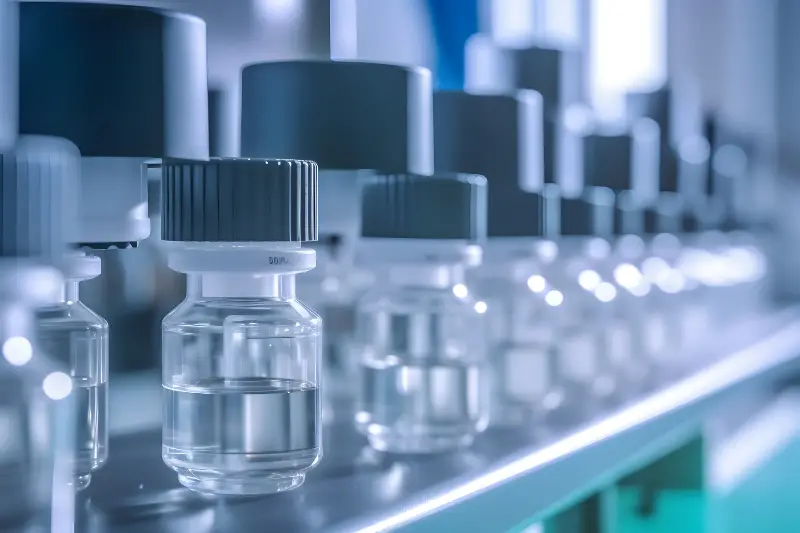Click here to get this post in PDF
Over the last few years, aseptic processing has been evolving but still, the pharmaceutical industry sees some limitations. That is especially due to human intervention as a major source of contamination. Experts say that the role of operators ought to be diminished with modern technologies and new approaches are needed to achieve the complete decontamination of products.
Steriline is one company that offers quality machines that can clean and decontaminate surfaces, vials, and glass. Set up back in 1989, Steriline is a European giant that deals with injectable products in aseptic processing. The company supplies its products to pharmaceutical companies all over the world.
Steriline focuses on advanced engineering and specialization in a collaborative partnership to ensure they give the customers exactly what they need. With the mission being a priority Steriline is committed to providing customers with durable, tailored, and distinct machines that work to precision.
In the pharmaceutical industry, aseptic processing is known to prepare sterile products. However, authorities and experts claim that terminal sterility has more advantages but the truth is most of these products in use today are produced aseptically. An assumption in aseptic processing is that these products will first be sterilized before they are manufactured into the final output via aseptic methods.
Many are the times that during this procedure there will be several gowned individuals in the production environment. Typical activities that they could be undertaking include filling, setting up the processor monitoring the environment.
Brief History on Aseptic Processing
Before the High-Efficiency Particulate Air (HEPA) cleanroom and filter were invented, aseptic processing was carried out by operators kept in gloveboxes. These boxes separated them from contaminating the sterilized materials. That means there was the isolation of the sterilized products and the operator who was there to assemble and handle the products. The isolation ensured the safety of the product as well as its sterility.
HEPA filters were introduced into the market in the mid-1950s and were quickly adopted by many firms. The filters provided a massive room whereby equipment was now mainly used in the aseptic processing. Operators in sterilized garments could still be included in the procedure, but they only came in to set up the machines and provide any further adjustments. The operator would also be there to collect samples of the environment and also address any malfunctions.
Improvements have happened over time and equipment reliability has greatly improved. The gowning materials become robust and more comfortable as well as validation of the sterilization processes. Thanks to these improvements barriers were also introduced such as the Isolators and the restricted access barrier systems.
Aseptic processing today
Operations in aseptic processing today use aseptic technologies. The new cleanrooms are still under talks and discussion. However, the aseptic processing today to some degree still needs the services of an operator who must use sterilized items. Sterilized is used instead of sterile because once the item is handled by personnel and placed in a manned cleanroom it is no longer sterile.
Operators in the cleanroom use their gloved hands to handle the utensils while the operators for the isolator and RABS make use of the equipment gloves in handling. Some truly refined aseptic manufacturing concept does not require any operators. However, since this is a new technology and no one would readily hop on to it soon. It will stay for a long time before companies accept the concept universally. Even though it is highly desirable, the pharmaceutical industry is quite conservative and it would take time to implement it.
Certainly, we hope that aseptic processing will take advantage of the rapidly changing technological advancements since their adoption could bring more good and efficiency into the industry.
Performance
Performance in aseptic processing has tremendously improved over time. The operator interacts, however, with the materials which normally is a limitation. The material will no longer be sterile. Operators use a glove system to carry out some tasks such as:
Operation: Here the operator is responsible for clearing jams, replenishing components, and winding up spills. They will also perform any other supportive tasks.
Set-up: Aseptic equipment cannot begin functioning upon the push of a button. Very few of them are able to. That means an operator is required to set them up such as the conveyor rails and the fill weights.
Monitoring: Operators are tasked with the collection of product samples in the environment and also oversee the entire process.
Robotics
Steriline is fully aware that robotics is the future of aseptic processing. Robots are being used in almost every other industry today as they are more efficient. The company has several robotic products to accomplish tasks in less time. Some of the effective robotics by Steriline include the robotic tray loader, robotic tub decontamination system, robotic vial capping machine, and robotic nest filling machine.
Aseptic processing has been evolving even though there are still limitations of contamination. With the advanced use of robotics probably the contamination chances will be greatly reduced. However, that could be in years to come as of now most of this equipment will require being handled by an operator.
You may also like: 3 Custom Manufacturing Methods Every Business Needs to Know
Image source: stock.adobe.com

